Tutorial Pricing: $3.25ea OR any 10 for $10
(use code "Any10410" at checkout)
Paid Requests for $25ea
(comes with any 8 freebies -> so 9 for $25)
100's Of Free Demos & Chord Sheets
- Home
- 50s & Vegas
- Las Vegas Guitar Lessons
Las Vegas Guitar Lessons
On The Acoustic
Welcome to my Las Vegas guitar lessons page where you'll discover the chords, lyrics and acoustic demos to many great Las Vegas type songs on the acoustic guitar.
Help yourself to the free pdf chord sheet downloads and check out my acoustic versions from the free demos.
Bulk purchases for full instructional tutorials are available from the homepage bringing down the cost of a lesson to as little as 60 cents each.

Jump menu to quickly access the artists on this page.
Bobby Goldsboro - Autumn Of My Life, Honey
Bobby Russell - Saturday Morning Confusion
Chris Montez - The More I See You
David Lee Roth - Just A Gigolo
David Soul - Going In With My Eyes Wide Open, Silver Lady
Dean Martin - Ain't That A Kick In The Head, Everybody Loves Somebody Sometime, Mambo Italiano, Memories are Made Of This, My Rifle My Pony And Me, Release Me, Return To Me, Sway, That's Amore, We'll Sing In The Sunshine, You Belong To Me
Ella Fitzgerald - Dream A Little Dream Of Me
Englebert Humperdinck - After The Lovin, How Do I Stop Loving You, Love Me With All Your Heart
Francis Langford - I'm In The Mood For Love
Frank Sinatra -Both Sides Now, Fly Me To The Moon, I've Got You Under My Skin, My Way, Nice N Easy, Please Don't Talk About Me When I'm Gone, Something Stupid, Strangers In The Night, That's Life, Young At Heart
Henry Burr - I Wonder Where My Baby Is Tonight
Israel K - Somewhere Over The Rainbow
Jerry Butler - Moon River
Lou Bega - Mambo #5
Louis Armstrong - What A Wonderful World
Matt Monroe - Be My Lady, Softly As I Leave You
Michael Buble - Everything, It's A Beautiful Day
Nat King Cole - L-O-V-E, Mona Lisa, My Baby Just Cares For Me, Nature Boy, Save The Bones For Henry Jones, The Christmas Song (chestnutts roasting), Unforgettable
Pat Boone - Gone Fishin, Moody River, Speedy Gonzalas
Paul Anka - Put Your Head On My Shoulder, Times Of Your Life
Sammy Davis Jr - The Candy Man
Sid Selvidge - Then I'd Be Satisfied With Life
Sol Bloom - The Streets Of Cario
The Lucky Duckies - Buona Sera
Tom Jones - Delilah, I Believe, It's Not Unusual, Just Help Yourself, Stay You'll Stay Until Tomorrow, She's A Lady, Set Me Free
Tony Orlando - Candida, Knock Three Times, Tie A yellow Ribbon
Wayne Newton - Remember When We Made These Memories
1920s Medley
Las Vegas Guitar Lessons
Chords, Lyrics, Demos, Tutorials
Barry Manilow Songs
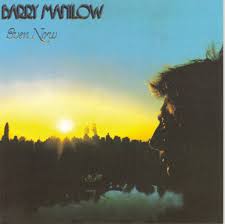
Copacabana this was a single from his album "Even Now" back in 1978. Manilow co-wrote this one with two other writers while having a conversation at the Copacabana Hotel In Rio. He scored a #8 hit and his only ever Grammy Award.
I play this one in standard tuning with a steady up and down rhythm pattern but no lead required. Play the chords Gbm, Fm, Em, A7, Dmaj7, Bm, Db7 and B7.
Jump To Top
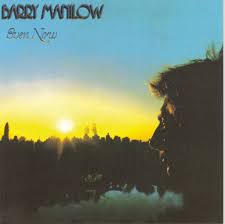
I Can't Smile Without You was a #1 from the "Even Now" album of 1977 and it also crossed over to #3 on the Billboard Hot 100 chart. The Carpenters also recorded a version but with a slightly different vibe. For the record, Barry Manilow did not write this song.
For rhythm here you can play a down down up down up down up and repeat rhythm pattern in standard tuning and no lead. Chords in this one are G, Em, Am, Am7, D7, Dsus, Dm, Cmaj7, G7 and a Gmaj7.
Jump To Top
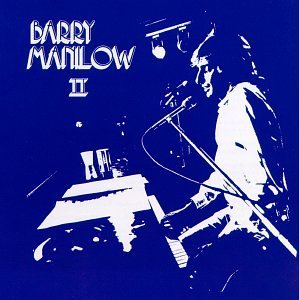
It's A Miracle appears on the 1974 album Manilow II. The album was re-leased two more time. The song was #12 in the US on one chart and #1 on another and peaked at #1 in Canada.
More info to follow.
Jump To Top Of Las Vegas Guitar Lessons
Bobby Goldsboro Songs
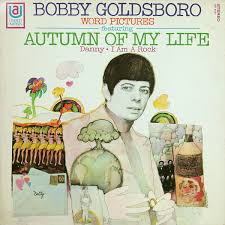
Autumn Of My Life was released as a single back in 1968 from Bobby Goldsboro's album Word Pictures. The song peaked at #19 on the Billboard Hot 100 and #2 on the Easy Listening chart.
More info on this song to follow.
Chords & Lyrics
Jump To Top Of Las Vegas Guitar Lessons
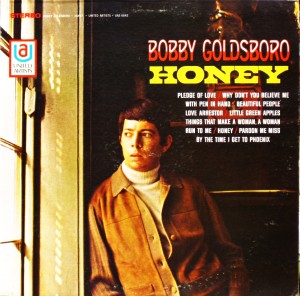
Honey was the name of Goldsboro 1968n album which became the largest selling album in the world that year. The single Honey, did very well and hit # 1 in the US and and was a top 10 in several other countries.
Chords & Lyrics
Jump To Top
Bobby Russell Songs
Saturday Morning Confusion ... info soon.
Chords & Lyrics
Jump To Top
Chris Montez Songs
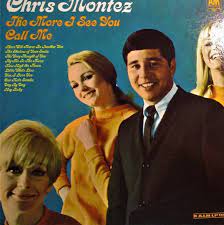
The More I See You first hit the airwaves in 1945 and was a hit for Joy Marshall in 1966.
But that same year Chris Montez had the most success with his version with a #16 on the Billboard Hot 100, a #2 on the Easy Listening chart and a #3 in the UK. Ella Fitzgerald also recorded this song.
This one I play in standard tuning with the chords F, Gb, G, D7, Gmaj7, Am7, A#, D#, C, Cm and E7 but no lead required. For rhythm play a down down down up - up up up down up down up and repeat rhythm pattern.
Jump To Top
David Lee Roth Songs
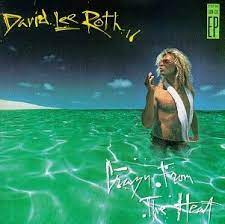
Just A Gigolo was originally composed in 1928 in German but was translated over to English a year later.
Louis Prima actually combined two songs, "Just A Gigolo" and "I Ain't Got Nobody" to come up with this great result in 1956.
And in 1985, David Lee Roth put his spin on the tune and scored a #12 in the US and #7 in Canada. You'll find the track on his 1985 album "Crazy From The Heat".
For this number I play a down up down up with walking bass for a rhythm pattern but no lead required in standard tuning. The chords here are G, Am, D7, Gmaj7, G6, Edim, D, F, E7, Cm, Gb, E, A7 and a Dsus.
Jump To Top Of Las Vegas Guitar Lessons
David Soul Songs
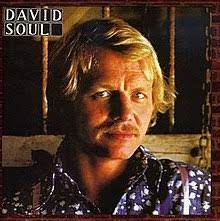
Going In With My Eyes Wide Open was released in 1977 as part of his debut album titled "David Soul." The single proved to be a significant success, reaching No. 2 on the UK Singles Chart and achieving favorable chart positions in other countries.
The song's popularity was bolstered by Soul's recognition from his role as Detective Kenneth "Hutch" Hutchinson in the television series "Starsky & Hutch." "Going In With My Eyes Wide Open" showcased Soul's musical talents and contributed to his reputation as a dual-threat entertainer, excelling both as an actor and a musician.
Play this one in standard tuning with a few riffs and a
down down up down up down up and repeat
rhythm pattern. The chords are Bm, G, A7, Gbm, Em and an A.
Jump To Top
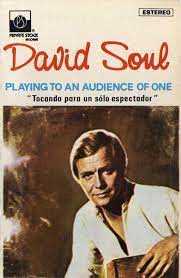
Silver Lady by
David Soul is a well-liked single that became a hit in 1977. It was
written by Tony Macaulay and Geoff Stephens, with Macaulay handling the
production. The song reached the number one spot on the UK Singles
Chart.
Before securing the number one spot, "Silver Lady" spent five weeks in the top ten, surpassing even Elvis Presley. The single also performed well in Ireland, where it stayed at number one for four weeks. It reached number five in Australia but didn't fare as strongly in the United States, peaking at No. 52 on the Billboard Hot 100 and No. 23 on the Easy Listening chart. The song is part of David Soul's second album, titled "Playing to an Audience of One."
Interestingly, the song was featured in the 2013 film "Filth" in the UK. Overall, "Silver Lady" remains a notable song in David Soul's musical career, achieving success in various parts of the world and leaving a lasting impact.
Jump To Top
Dean Martin Songs
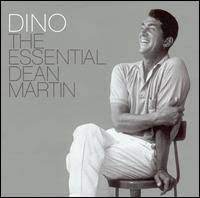
Ain't That A Kick In The Head was written as a pop song in 1960, but Dino turned it into a big band jazz arrangement. His arrangement was also used in the original Oceans 11 movie.
The original title was called Ain't That A Kick In The Seat. Dino's version never charted, but over the years the song has appeared on several of his Greatest Hits albums.
The Irish group Westlife also covered this song in 2004.
I play this one with a capo 2nd fret and with a root down root up down up and repeat rhythm pattern. Some lead here as you play through the chords C, G7, Adim, Dm7, G, E7, A7 and D7.
Jump To Top Of Las Vegas Guitar Lessons
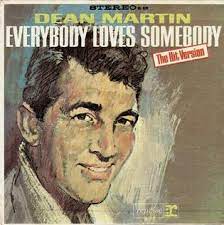
Everybody Loves Somebody was written in 1947 and was recorded by others before Dean Martin and that includes Frank Sinatra. But it was Deans version in 1964 that put the song on the map.
Although Dean Martin graced us with numerous hit songs throughout his illustrious career, "Everybody Loves Somebody" holds an unmatched status. It not only topped the Billboard Hot 100 chart in 1964 but also became Martin's signature song, supplanting his earlier staples such as "That's Amore".
The one has the following chords A7 +7, D, Daug, G, B7, Em, C, A7, Gbm, Fm, A7/A#, Em/D, D7, Gb/D and an E7 in standard tuning. For rhythm play a root up down up root up down up and repeat pattern and this one has some picking to learn.
Jump To Top
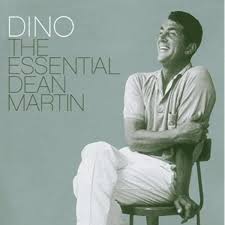
Mambo Italiano comes from the pen of Bob Merrill, who was a writer who was under a deadline in 1954, and while sitting in an Italian restaurant trying to come up with a song for his approaching deadline, on a napkin he wrote Mambo Italiano. At a nearby payphone he passed along the melody and lyrics to the pianist who was waiting in the studio.
Rosemary Clooney recorded the song first and had a #1 hit in 1955.
Dean Martin recorded his version later in 1955 and had a #2 hit in Australia. The song wasn't part of any album but it did appear on The Essential Dean Martin Hits.
Another one with quite a few chords including Em, Am, B7, C, Gb, G, E7, D7, Em/D#, Em/D, Db/E and a C7 with some lead work blended into the rhythm in standard tuning. The rhythm pattern here is a root down up down up root up down up with a few chops throughout.
Jump To Top
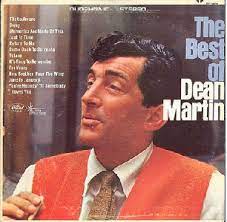
Memories Are Made Of This was Dean Martins only #1 UK hit with this song in 1955. Members of the backup group, The Easy Riders, wrote this one and sang on Dean's track, which reached #1 also on the Billboard Top 100 in 1956.
The most successful version in terms of sales was not Dean's version of this song but one recorded in German. The Everly Brothers, The Drifters and even Johnny Cash have covered this song.
Play a root down up up down up and repeat rhythm pattern in standard tuning. No lead work here with the chords E, B7, A, E7 and Gb.
Jump To Top Of Las Vegas Guitar Lessons
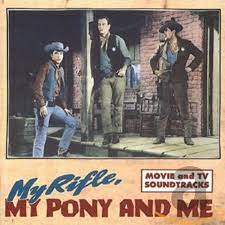
My Rifle My Pony And Me was in a 1959 film called Rio Bravo starring John Wayne, Walter Brennan, Dean Martin, Ricky Nelson and Angie Dickinson.
Dean Martin and Ricky Nelson took turns singing this song in the movie but Dino recorded a version himself. Some people call this the Dean Martin Rio Bravo song.
I use a capo 1st fret here and no lead in this one while playing the chords C, F, G, Am, C7 and Em. For rhythm strum lightly for the first bit and then play a root down up root up down up pattern.
Jump To Top
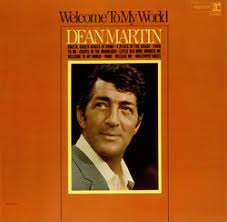
Release Me was actually written and first released back in 1949. Both Dean Martin and Engelbert Humperdinck recorded and released their versions in the same year which was 1969.
Humperdinck's version became one of the largest selling singles of all time.
For chord here you'll need to play D, A, G, B7, Em, Ddim and an A7 and you'll play a few riffs and do some lead work while in standard tuning. The rhythm here is a root down root up down up and repeat pattern.
Jump To Top
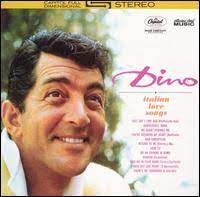
Return To Me was first introduced to the world through its release as a single by Dean Martin in 1957. The song was a commercial success and performed exceptionally well on the music charts. It reached #1 on the Billboard Hot 100 chart, a remarkable achievement that solidified its place in the annals of music history. Its enduring popularity allowed it to remain on the charts for an impressive 22 weeks.
Dean recorded the song in 1961 for this album "Dino Italian Love Songs".
I play this one in drop D tuning with some lead required. Play a root down bass up down up and repeat rhythm pattern with the chords A7, D, G and an E.
Jump To Top Of Las Vegas Guitar Lessons
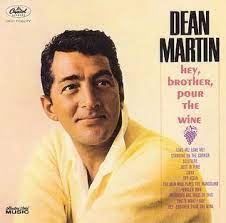
Sway was originally written in Spanish for Pedro Infante Cruz, a well known Mexican actor and singer but it was translated into English by Norman Gimbel, so Martin could record an English version. Dino recorded Sway in 1954.
His version reached #6 in the UK and #15 in the US and can be found on the 1954 album "Hey Brother Pour The Wine".
Download the Sway Dean Martin lyrics sheet below.
Some
lead required in this number played in standard tuning with the chords
A7, Dm, A+, Dm, C and F. Play a root down up down up root up down up and
repeat rhythm pattern.
Jump To Top
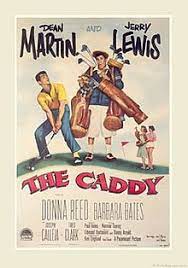
That's Amore has an interesting back story. For an upcoming 1953 movie called The Caddy, Jerry Lewis paid a composer and a lyricist $30,000 to come up with several songs for the movie that Dean could sing, in the hopes they'd write a hit.
That's Amore was the result and became one of those Dean Martin top songs. Amore means "love" in Italian.
For rhythm here play a shuffle rhythm in the beginning and then use root down down or root down up down up and repeat. No lead and for chords you'll need a Am, Dm, E7, A, B7, Db, Gb, D, F, A#, C7, Eb and Ebm in standard tuning.
Jump To Top
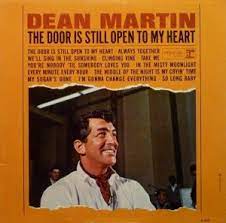
We'll Sing In The Sunshine was written by Gale Garnett from New Zealand and she recorded this song back in 1964 and had a #1 and a top 10 on several charts.
Several artists including Sonny & Cher, Wanda Jackson, Dolly Parton and Helen Ready all recorded the song.
Dean Martin put the song on his "The Door Is Still Open To My Heart" in 1964 but he never released the song as a single.
I use a capo 2nd on this one with a root down up root up down up and repeat pattern with some arpeggio blended in but no lead. The chords you'll need are C, Em, F, G, Dm7, G7 and a C7.
Jump To Top Of Las Vegas Guitar Lessons
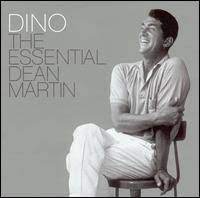
You Belong To Me is one of those songs by Dean Martin which was late to the party as Joni James, Jo Statford and Patti Page all had recorded and released their versions first.
Dino got his version out there in Aug of 1952 and still managed a #12 ranking on the charts. The song was not on any early Dean Martin albums but appeared on his "Dino The Essentials Greatest Hits" album from 2004.
Bob Dylan and Jason Wade also have their versions of this song.
I
play this one in standard tuning with a root up down up and repeat
rhythm pattern and some lead required. The chords here are C, Cm, G,
D/Gb, Em, A7, D7, Bm, Am7 and a Dm.
Jump To Top
Ella Fitzgerald Songs
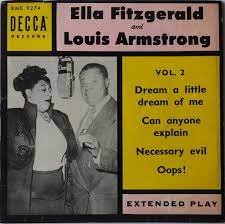
Dream A Little Dream is an old number from 1931 and was made popular in the 60s by The Mamas And The Papas. Ella Fitzgerald recorded her version in 1957 with Louis Armstrong.
I'm not sure if she released it as a single.
I play this one in standard tuning with no lead and with a down up stop up and repeat rhythm pattern. For chords you'll need a C, Am7, Dm7, G, A7, F, Fm, G#, D#, Ab, A#m, G7, C7, Abm, Gm and a C#7.
Jump To Top
Engelbert Humperdinck Songs
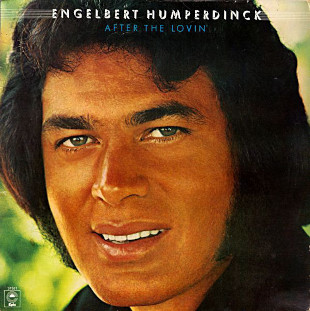
After The Lovin was a song recorded by Engelbert Humperdinck for his 1976 album of the same name. The song reached #8 on Billboard and #5 on Cashbox.
More info soon on this song.
Chords & Lyrics
Jump To Top Of Las Vegas Guitar Lessons
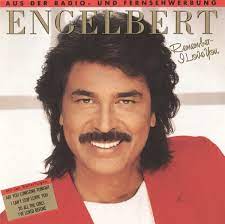
How Do I Stop Loving You is a beautiful song recorded back in 1987 and found on his "Remember I Love You" album.
There was only one single released from that album but this song wasn't it, but its a very popular song at live shows.
A capo 1st here is the original key in standard tuning and played with a root up down up and repeat rhythm pattern. Some lead in this version with the chords Em, Cmaj7, B7, Am7, D7, G, Gb, Em/D#, Em/D/, Gmaj7, E7, Cm, Em/A, D7/C, Bm, Esus and Gm.
Jump To Top
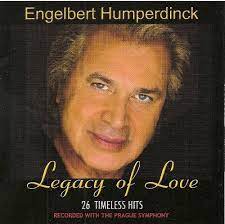
Love Me With All Your Heart was translated from Spanish to English and published in 1961. Ray Charles had a #1 on the Pop charts in 1964 with his version. Engelbert released his album "Legacy Of Love" in 2009 that contains this track.
He never released the song as a single.
I play this one in standard tuning with the chords C, Am, Em, F, G, G7, Dm and A7 with no lead required. Play a root down up down up root up down up and repeat rhythm pattern.
Jump To Top
Francis Langford Songs
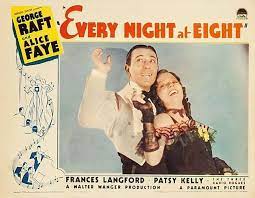
I'm In The Mood For Love was recorded by Langford for the 1935 movie "Every Night At Eight" and became her signature song.
Many versions have been recorded by others including Vera Lynn, Fats Domino, Brenda Lee and more.
Play this one with a capo 2nd fret in standard tuning and with some lead. Play a down up down up down and repeat rhythm pattern and use the chords Gb, G, Am7, D7, Bm, A#m, Gmaj7, Am, Dbm, Bm, E7 and a G#.
Jump To Top Of Las Vegas Guitar Lessons
Frank Sinatra Songs
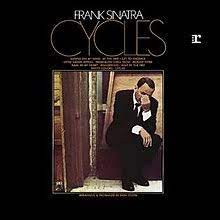
Both Sides Now was written by Canadian folk artist Joni Mitchell and originally just called Both Sides and was first recorded by Judy Collins. Frank Sinatra changed the title slightly and called it From "Both Sides Now" for his 1968 album "Cycles".
It's almost hard to imagine that 11 songs were recorded in just 3 hrs, but one of the songs got scratched for the final album release. This song was never released as a single.
For this one I play with a capo 1st fret in standard tuning but no lead work. Play a down down down down up down up down down and repeat rhythm pattern with the chords G, C/G, Bm, C, Am, D7, Dsus, D7sus and a D.
Jump To Top
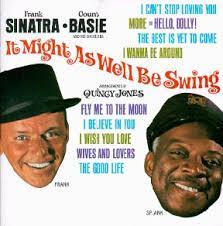
Fly Me To The Moon was written by Bart Howard who said later it took him 20 years to learn how to write a song in 20 minutes and this song was that result.
The initial title was "In Other Words" and when Peggy Lee popularized the song with her appearance on Ed Sullivan, she convinced Bart to change the name.
Frank Sinatra recorded the song for his 1964 album "It Might As Well Be Swing." But strangely enough, the song was never released as a single, and yet was one of Frank's most popular songs.
The chords here are E7, Am, Dm, G7, Cmaj7, F, A7, A7/A#, G# and a Dm7 with a bit of lead required in standard tuning. Play a down up down up and repeat rhythm pattern with some walking bass .
Jump To Top Of Las Vegas Guitar Lessons
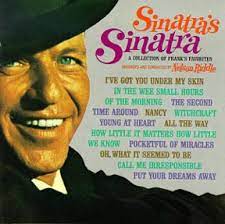
I've Got You Under My Skin was written by Cole Porter back in 1936 and the song was recorded in the 30's by Elanor Powell, Ray Nobel and Hal Kemp before Sinatra took his shot at the song.
Sinatra made several recordings of the song starting in 1946, then again in 1956 and again in 1963 and a live version from the Sands Hotel Copa Room in Vegas with Count Basie in 1966.
This one is played i standard tuning but has a few chords which are G, Dm7, Cmaj7, G7, Fm, Bm, E7, C, A#, G#, F, A7sus, A6 and an A7. No lead here as you play a down up down up down up rhythm patter with some bass runs
Jump To Top
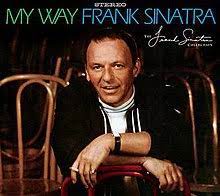
My Way was Frank Sinatra's most famous song and was first heard in French by Paul Anka while on holiday in southern France in the late 60's. Anka flew to Paris and negotiated rights to the song for $1... but royalties from Anka's version or anyone else's, were to be paid when due.
Anka re-wrote the song specifically for Frank Sinatra who recorded the song in one take on Dec 30th 1968 for the album of the same name, before heading to a New Years party at the SANDS Hotel in Vegas. Sinatra later came to hate the song as has been reported.
I play a capo 2nd fret on this one with the chords C, G6, Gm13, A7, Dm, F+6, Dm7, G, C7, F, Fm, Em and an Am7. Some lead in this song in standard tuning as you play a root up down up root up down up rhythm pattern with some chops throughout the latter part of the song.
Jump To Top
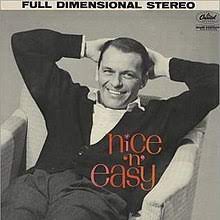
Nice N Easy was not only a great song, but the name of his 1960 album of ballads, with this song being the exception and only non-ballad track on the record.
The song was a single and peaked on the charts at #60.
This
song has the following chords which are C, Caug, Am, G, Dm7, Gsus, G,
G/D#, A7, E7, C+6, G7, F and a D7 in standard tuning. Play a down down
down up down up and repeat rhythm pattern but no lead work.
Jump To Top
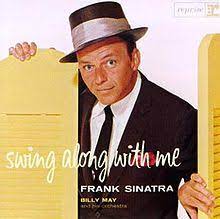
Please Don't Talk About Me When I'm Gone is an old 1930's tune recorded by Frank back in 1961 and put it on his "Swing Along With Me" album but the song was not released as a single from that album.
Others who have recorded this song were Ella Fitzgerald, Sammy Davis Jr, Dean Martin and Mose Alison to name a few.
A bit of picking in this lesson with the chords C, E7, A7, D7, G, G7, A and an Fm played in standard tuning. For rhythm I play a down up down up down up rhythm pattern with some walking bass.
Jump To Top Of Las Vegas Guitar Lessons
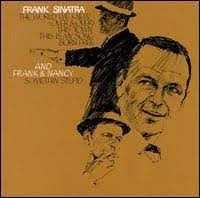
Something Stupid was recorded by Frank and daughter Nancy in 1967, a year after Carson and Gaile Foote put out their version.
The Sinatra's duet was a #1 smash hit both in the US and the UK. The track in on Frank Sinatra's album "The World We Knew".
This one has a drop D tuning but always optional, with some lead while playing a root down up down up root up down up rhythm pattern. For chords you'll need an Em, A, D, A7, D7, G, A#, D7, E7 and a Dmaj7.
Jump To Top
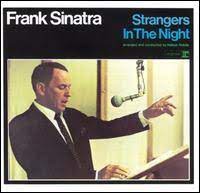
Strangers In The Night was originally given to a female Greek singer who thought it would sound better if a man sung the song.
So in 1967, Frank Sinatra delivered with a #1 hit in the US and UK. His album and the song won several Grammy Awards the following year in 1967.
Don't cha just hate it when that happens, she was probably thinking. This one has to be right up there with one of the best Frank Sinatra songs.
I play this one in standard tuning with a root up down up root down up down up and repeat rhythm pattern but no lead work. The chords here are D, Dmaj7, Em, A7, D, D6, Em7, Em6, Am7, B7, Gm and a Bm.
Jump To Top
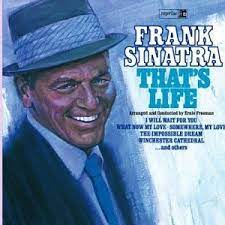
That's Life came on the radio and upon hearing OC Smith (the singer of Little Green Apples) sing this song, Frank pulled over and called daughter Nancy to find out who was the publisher.
So in 1966/67, That's Life peaked at #4 for Frank Sinatra and #3 in Canada. Many others then recorded the song including Aretha Franklin, Van Morrison, David Lee Roth just to name a few. Download my That's Life Frank Sinatra lyrics below.
Play this one with a capo 2nd fret and use a own up down up down down and repeat rhythm pattern. No lead here in standard tuning with the chords G, Em, Am7, D7, B7, A7, D, G7, C, D#, C#, C7, Fm, A#, A#m, G#, B, E, Eb and a G#7.
Jump To Top Of Las Vegas Guitar Lessons
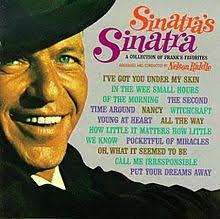
Young At Heart was a song that Frank Sinatra was the first to record this song back in 1953 and his version went to #2 the following year in the US and #12 in the UK but did not appear on any album until 10 years later in 1963 on the "Sinatra's Sinatra" album.
The song has also been recorded by Bing Crosby, Michael Buble, Barry Manilow and others. A movie, that was already in production, was renamed to this song title which starred Frank and Doris Day and was used in the opening and closing credits.
Dick Van Dyke recorded this song at age 90 using Franks original microphone back in 2017.
I play a capo 1st fret in standard tuning with the rhythm pattern root up down up root up down up and repeat. The chords here are G, Edim, Am7, D7, Gmaj7, G6, D, D7, Esus, E, Cm, D/Gb and an Em with some lead required.
Jump To Top
Henry Burr Songs
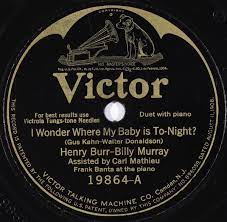
I Wonder Where My Baby Is Tonight was recorded by Canadian Henry Burr, a New Brunswicker who had the most hits in the decade from 1900-1910.
Burr recorded more than 12,000 songs under various names and for various labels. This song was recorded in 1925.
I played this one in standard tuning with the chords G, Edim, D7, B7, C, E7, Am, A7, D, F, Ab, G7 and with some lead. For rhythm you can play a root down up down up and repeat rhythm pattern.
Jump To Top Of Las Vegas Guitar Lessons
Israel K Songs

Somewhere Over The Rainbow was officially called "Over The Rainbow" and was written for the 1939 movie The Wizard Of Oz.
In 1993 Israel Kamakawiwo covered the song for his "Facing Future" album scored a #2 in the US. Eva Cassidy and Cliff Richard also covered the song.
For chords here you'll need a C, Em, Am, F, G and an E7 in standard tuning but no lead required. Play a root down up down up down up and repeat rhythm pattern.
Jump To Top Of Las Vegas Guitar Lessons
Jerry Butler Songs
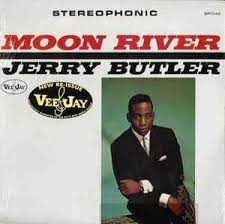
Moon River was first recorded in 1961 by Audrey Hepburn for the movie "Breakfast At Tiffanys". Over the years artists like Andy Williams and Jerry Butler and hundreds more have recorded the song.
Jerry Butler released his version also in 1961 and had a #1 hit in New Zealand and a #3 in the US. It can be found on his album of the same name.
Some lead here with the chords D, Bm, G, D/Gb, Em, A7/A#, D7, Gm, Bm/A, Bm/Ab, A7, Dmaj7 and in standard tuning. For rhythm I play a root down up root up down up pattern.
Jump To Top
Lou Bega Songs
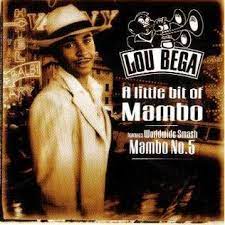
Mambo #5 was released in 1999 from German singer Lou Bega's album "A Little Bit Of Mambo". The song was originally released as an instrumental back in 1949.
This was a monster hit reaching #1 in too many countries to list and also hit #3 in the US.
I play a capo first on this one and in drop D tuning with the chords Em, D, A, and A7. Just one riff as you play a down down up down up down up and repeat rhythm pattern.
Jump To Top Of Las Vegas Guitar Lessons
Louis Armstrong Songs
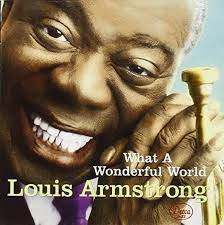
What A Wonderful World was released in 1967 by Louis Armstrong and topped the Pop charts in the UK but due to poor promotion in the US, the song did poorly.
It appeared in the 1988 film "Good Morning Vietman" and was re-released where it reached #32 on Billboards Hot 100 chart.
The track can be found on Armstrong's album of the same name.
I play a capo 3rd fret on this one in standard tuning with a down up down up down and repeat rhythm pattern but no lead. For chords you'll need a Dmaj7, Em, D, Gbm, Em, Bm, Gb, A#, A#/A, A7, Adim, A7sus, Dmaj7/B and a Gm.
Jump To Top
Matt Monro Songs

Be My Lady was a song written by Filipino songwriter Vehnee A Saturno in 1983.
I'm not sure when Matt Monro recorded this song but the track can be found on his album "The Singers Singer".
For this number you'll play a down down up down down down up down up and repeat rhythm pattern but no lead. Chords here are G, Dm7, G7, Cmaj7, Edim, Gb, Bm, Bm/A, E, Am7, D7sus, D7, D#, G#, D#m, C#, C#m, Gb, Fm, A#m D, Db and an Ab.
Jump To Top
Softly As I Leave You ... info soon.
Jump To Top
Michael Buble Songs
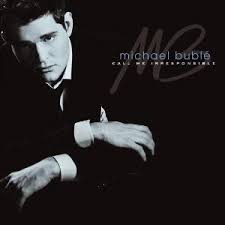
Everything was released as a single back in 2007 from the album "Call Me Irresponsible".
The song hit #1 in Italy and was a top 10 in many other countries. A music video was produced for the song with guest appearances by Whoopi Goldberg and Bono.
This one can be played in standard tuning but some lead work here while playing a down up stop up down up stop up and repeat rhythm pattern. The chords here are D, E, Bb-5, A7sus4, Bm, E7, G, Gm, D7, Gb, A, B, Dbm, Ab, Dbm and an Am.
Jump To Top Of Las Vegas Guitar Lessons
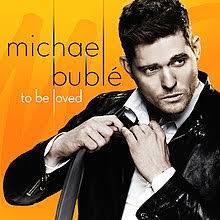
It's A Beautiful Day was the first single from his 2013 album "To Be Loved".
The song was a top 10 in several countries with it's highest charting at #3 in Finland.
Played in standard tuning but no lead here with the chords C, G, Am, F, Esus, E7, Am/G and an Fmaj7. Play a down down up down up down up and repeat rhythm pattern.
Jump To Top
Nat King Cole Songs
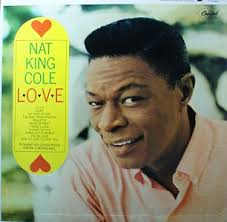
"L-O-V-E" is a song by Nat King Cole that was recorded in June 1964. It was released as a single later that year and also featured on Cole's album titled "L-O-V-E," which was released in 1965.
L-O-V-E" became one of Nat King Cole's signature songs and has been widely covered by many artists since its release. It remains a popular choice for romantic occasions and is often featured in films and commercials.
The album "L-O-V-E" was Cole's last studio album recorded before his death in 1965, making it a significant part of his legacy in the music industry and a Nat King Cole best seller.
I play this one in G with the chords G, D, D7, C, A7, Am7, Edim and then with a key change to A using the additional chords E7, A, E, Bm and an Adim. Use a root down root up down up and play a melody lead break in the middle of the song.
Jump To Top
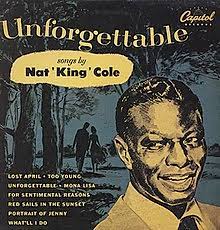
Mona Lisa is a famous song written by Ray Evans and Jay Livingston for the 1950 movie "Captain Carey, U.S.A." The song was used in a scene where the main character sings to a portrait of Mona Lisa.
Nat King Cole recorded "Mona Lisa" in 1950, and it became a huge hit. It topped the charts in the US and sold over a million copies.
Musically, "Mona Lisa" features Cole's smooth vocals with a rich orchestral backing. The melody is simple yet haunting, and the lyrics are elegant and romantic. The song has become a jazz standard, covered by many artists like Elvis Presley, Andy Williams, and Harry Connick Jr.
Played with a capo 1st fret in standard tuning, this one only has a few chords which are G7, C, F, Fm and Cdim. The rhythm pattern I use is a root up down up bass up down up and repeat.
Jump To Top Of Las Vegas Guitar Lessons
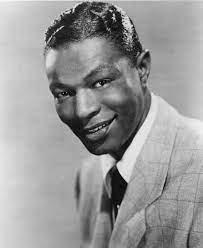
My Baby Just Cares For Me was written for a film from 1928 called Whoopee. Nat King Cole recorded the number in 1949 but his version was never released as a single.
And to my knowledge, the recording was never put onto an album.
I play this one in standard tuning with a down up down up with walking bass rhythm pattern. There is some lead in here with the chords G, Am7, D7, B7, Em, A7, D7, C, Adim and E7.
Jump To Top
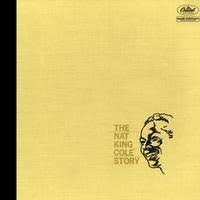
Nature Boy was introduced to Nat King Cole from a tape dropped off to him in 1948 before he was about to take the stage.
After hearing the song a bit later he knew he wanted to record it and eventually tracked down the writer.
There is lead in here while playing in standard tuning with the chords Dm, Em, A7, Dm, Dmaug7, E7sus4, A7sus, Dm Bb-5. The rhythm pattern is mainly down strokes with some arpeggio blended into the pattern.
Jump To Top
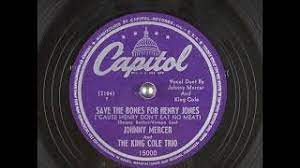
Save The Bones For Henry Jones has very little
info available. Nat King Cole did a 1947 version of
this song which peaked at #12 on the US Pop Chart.
It doesn't appear that this song was ever placed on an album.
Played in standard tuning with the chords G, C, D7, A7, D, E7 and Edim, there is some picking in this one. You'll need a down up down up down up down up and repeat rhythm pattern.
Jump To Top Of Las Vegas Guitar Lessons
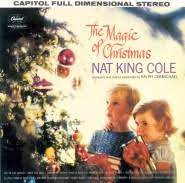
The Christmas Song was written in 1945 by Mel Torme and Bob Wells. But over the years people began calling the song "Chestnut's Roasting On An Open Fire" or "Merry Christmas To You".
Nat King Cole recorded his first version in 1946. It became a huge hit and went to #3. He recorded is again in 1953 and 1961, with the last version being the classic version we all know and love today.
Lots of chords here including G, Am, Bm, Cmaj7, Dm, G7, B7, Em, Em/Eb, Em/D, Gb, Bmaj7, F, D7, Cm, A#, A7sus and A7 while played in standard tuning and a capo 2nd fret. No lead as you play a down down up down up and repeat rhythm pattern.
Jump To Top
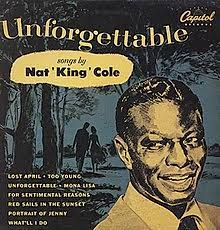
Unforgettable
was written by Irving Gordon originally under the title Incomparable.
The music publishers asked him to change it to Unforgettable which has
become one of those Nat King Cole classics over the years.
Unforgettable, which he did in 1951. 40 years later in 1991 daughter Natalie recorded a duet version with her fathers track. The song once again peaked as it did 40 years earlier, at #14 on the pop singles chart.
Play this one in standard tuning with a down down up down up down up and repeat rhythm pattern. There is some lead here with the chords Fmaj7, E, Bbmaj7, Gbdim, Eb6, Ebm, A#, G#7, G7, C9, F, Abdim, C7, G#, (Db m maj7 (13).
Jump To Top
Pat Boone Songs
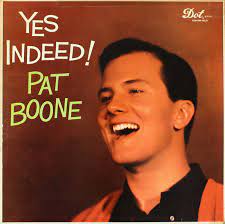
Gone Fishin was first recorded back in 1950 by Arthur Godfrey, The Three Suns and Johnny Guarnieri Quintet. None of these three versions charted. A Year later Bing Crosby and Louis Armstrong did a radio show in which their duet was recorded and later released, which peaked at #19.
In 1958, Pat Boone recorded a version for his album entitled "Yes Indeed".
You can play this one in standard tuning with some lead required with the chords D, E7, A7, A#, G, Gm, B7, D7 and a C7 with a root up down up and repeat rhythm pattern.
Jump To Top Of Las Vegas Guitar Lessons
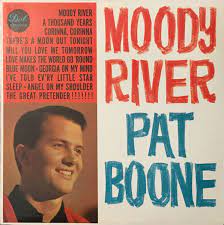
Moody River was written by Chase Webster and was first performed as a rockabilly tune.
In 1961 Pat Boone did a more mellow version for his album "Moody River" and had a #1 hit song.
I play a capo 2nd fret on this one in standard tuning and with just a riff throughout. Play a root up down up up down up and repeat rhythm pattern with the chords G, Em, G7, C and a B7.
Jump To Top
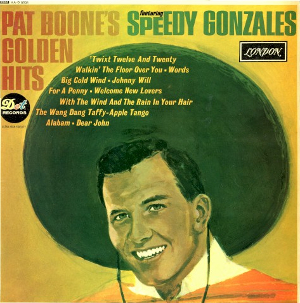
Speedy Gonzalas was recorded first in 1961 by David Hess and a year later picked up by Pat Boone who managed a #6 hit with the song. He put the song on his Greatest Hits album.
Jump To Top
Paul Anka Songs
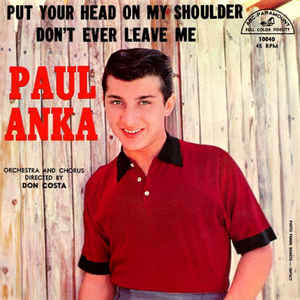
Put Your Head On My Shoulder was a #2 hit in the US and a #4 in Canada when it was released as a single back in 1958.
More info soon on this song.
Jump To Top Of Las Vegas Guitar Lessons
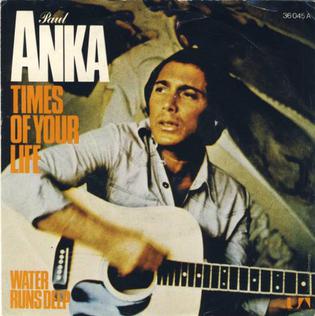
Times Of Your Life was originally written for a commercial back in 1975 but Anka then decided to record the song and made it a hot, reaching #7 on the Billboard Hot 100.
More info on this song soon.
Chords & Lyrics
Jump To Top Of Las Vegas Guitar Lessons
Sammy Davis Jr Songs
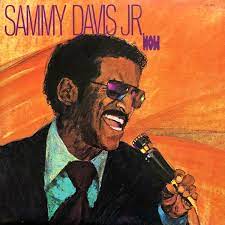
The Candy Man was written for the 1971 movie "Willie Wonka And The Chocolate Factory" and was sung by Aubrey Woods who was the store owner in the movie.
Sammy Davis Jr was not fond of the song but recorded it for his 1971 album "Sammy David Jr Now" and when released as a single, became his only #1 hit.
Barry Manilow used the original vocals from Sammy and created a duet for his album in 2014 called "My Dream Duets".
I play this one in standard tuning with no lead required and a root up down up and repeat rhythm pattern. The chords here are Em, A7, D, Adim, A7, Bm, Bm/A#, Bm/A, Bm/Ab, Esus, E, A7sus, G, Ddim, Db7 and a Gbm.
Jump To Top
Sid Selvidge Songs
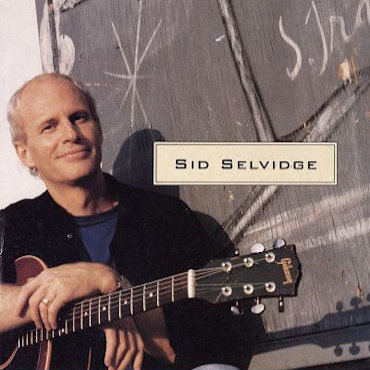
Then I'd Be Satisfied With Life was written by George M Cohan who passed away in 1942 at age 64. He was involved in Vaudeville and Theatre at age 8 and became a founding member of ASCAP in 1914. Tiny Tim released a version in 1967 and Sid Selvidge also covered the song, but I'm not sure which album.
For this one you can play a root down root up down up and repeat rhythm pattern with some lead required in standard tuning. For chords play A, D, G, A7, Bm, E7, Em and a Gb.
Jump To Top Of Las Vegas Guitar Lessons
Sol Bloom Songs
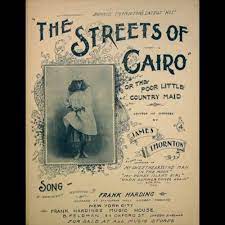
The Streets Of Cario has also been called the Arabian Riff song or the Snake Charmers song or The Poor Little Country Maid. Some have dated the song back to the 1890s but not totally sure.
Sol Bloom revived the song in the early 1900s but never copyrighted the song and was involved in music publishing in Chicago. How exactly he got involved in recording the song, I'm not sure.
I play a cap 2nd fret here in standard tuning with some lead and a root down root down and also root up down up and repeat rhythm pattern. For chords play a Dm, Am, A7, C7 and an F.
Jump To Top
The Lucky Duckies Songs
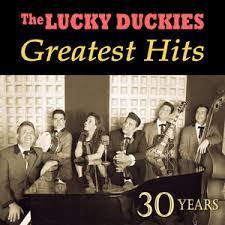
Buona Sera was a number one song from Louis Prima back in 1956. Many versions have been recorded through the years including from Van Morrison, Dean Martin and The Lucky Duckies.
The band is based out of Portugal.
Played in standard tuning and some lead with down strokes and then a steady up and down with walking bass rhythm pattern. The chords here are C, G7, F and an Fm.
Jump To Top Of Las Vegas Guitar Lessons
Tom Jones Songs
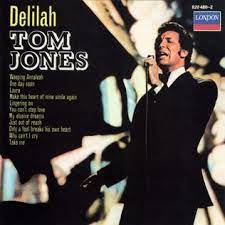
Deliliah was first recorded by PJ Proby in late November 1967, but hated the song so much he decided not to include it on his album.
Tom Jones decided to record his version in Dec, a month later. Delilah was a monster smash hit for Jones, hitting #1 in many countries. This was his 6th album and the first to reach the top of the UK charts.
This song appears on the album of the same name.
I play a light strumming followed by down up up down up down down down and repeat for the rhythm pattern. A bit of picking within the rhythm in standard tuning with the chords Em, B7, E, Am, D7, D, C and Cm.
Jump To Top
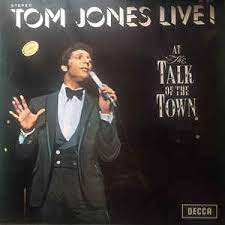
I Believe appears on the Tom Jones album from 1967 "Live At The Talk Of The Town."
Tom Jones never released this song as a single. Deana appeared with Tom Jones on The Voice UK 2019 and performed this song with him.
A capo on the 1st fret is the original key for this one while playing the rhythm down down down up down up using some arpeggio notes, followed by down down up down up down down down later in the song. No picking and the chords needed are D, Bm, Em, A7, D, Bm/A, A7sus, A#, D#, Cm, Fm, G# and B.
Jump To Top Of Las Vegas Guitar Lessons
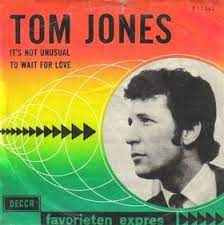
It's Not Unusual was first recorded in 1964 by an unknown Tom Jones via a demo for English singer Sandie Shaw. She was impressed and persuaded that Tom keep the song and release it himself, which he did. The song launched Tom's career as he scored a #1 in the UK and a top 10 in the US.
He later used the song as his theme song for his TV series "This Is Tom Jones" which lasted several years. The song can be found on the album "Along Came Jones Its Not Unusual".
I play this one in standard tuning and a capo on the 1st fret with the rhythm pattern down down up down up down up and repeat with some riffs in the rhythm. For chords play a Dbm, Gbm, E, A, Bm and a C.
Jump To Top Of Las Vegas Guitar Lessons
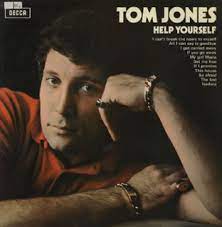
Just Help Yourself was another monster song for Tom Jones when it was released back in 1968. It was a #1 in five countries and a top 10 in three others.
This is actually an Italian song with completely different lyrics, so the melody was put to new English lyrics and voila. The song can be found on the album "Help Yourself".
For this one play the chords D, Em, G, A7 and a Dmaj7 with a drop D tuning. Play a root down up down up down up and repeat rhythm pattern with some picking and a few riffs.
Jump To Top Of Las Vegas Guitar Lessons
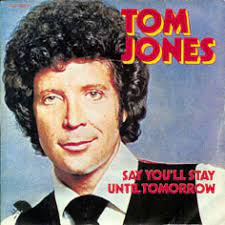
Say You'll Stay Until Tomorrow was released by Tom Jones back in 1977 and the song became a #1 country hit in both the US and Canada. It also reached #15 on Billboards Hot 100, making it a crossover hit.
Slim Whitman also covered this song the same year. The song hails from the album of the same name.
For chords play a G, G7, C, A7, D, D7 and Cm with a root down up root up down up and repeat rhythm pattern. A few riffs required in standard tuning.
Jump To Top Of Las Vegas Guitar Lessons
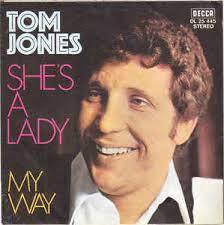
She's A Lady is a single from the 1971 album of the same name. The song hit #1 in Canada and the US. It was Tom's highest charting single based on being on several charts at the same time.
Paul Anka wrote the song and released his version a year earlier in 1970, but the Jones version became the most popular.
No lead work in this one as you play a down down up up down up down up and repeat and some shuffle strumming later on. The chords you'll need are Em, D, Bm, A#, F, D#, G, A and a Dsus.
Jump To Top Of Las Vegas Guitar Lessons
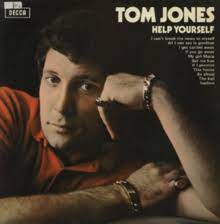
Set Me Free hails from the Tom Jones album of 1968 entitled "Help Yourself". The album itself did very well overall but this song was never released as a single.
The album reached #4 in the UK and #5 in the US.
I use a capo 3rd fret in standard tuning for this one. No picking with the chords D7, G, A7 and Em while playing a down down down up down up down down and repeat rhythm pattern and use some arpeggio in the first two downs.
Jump To Top
Tony Orlando Songs
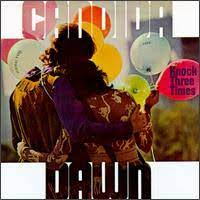
Candida was a major hit and reached #1 in 5 countries when it hit the airwaves in 1970.
The track can be found on the album "Candida".
A capo 2nd fret is the original key here in standard tuning and just a few riff in the rhythm. For chords play a C, G, Dm, C7 and an F with a down up stop up down up stop up and repeat rhythm pattern.
Jump To Top
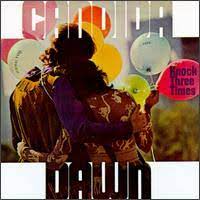
Knock Three Times was not actually credited as a Tony Orlando recording but as a Dawn recording because Orlando secretly recorded the song
without his record label knowing about it as he was working for a competing label at the time as a producer/singer. The song was released as a single in 1970 from his album "Candida" and made it to #1 in several countries including the UK and the US.
In 1971 Billy Crash Craddock took the song to #3 on the country charts.
Played with a capo 2nd fret in standard tuning there is some lead here. Play a root up down up root up down up and repeat rhythm pattern with the chords D, G, A, Em, A7 and a D7.
Jump To Top Of Las Vegas Guitar Lessons
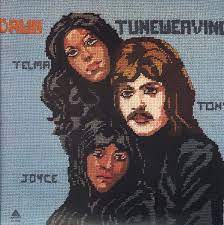
Tie A Yellow Ribbon hit the airwaves in 1973 and was a huge hit reaching #1 in the US and the UK.
A yellow ribbon in the 1970s meant a loved one was away on military duty or serving time in jail, and upon their return would be welcomed home. The song hails from the album "Tuneweaving".
You can play this one in standard tuning with a root down up down up down up and repeat rhythm pattern. Some lead required with the chords F, Am, Gm, C7, Cm, D7, A#m, Dm, A#7 and an Faug.
Jump To Top
Wayne Newton Songs
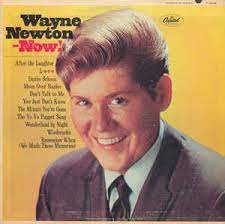
Remember When We Made These Memories was released as a single and reached #15 in the US Adult Contemporary chart and as a crossover at #69 on the Billboard Hot 100 chart.
The song can be found on the album "Wayne Newton Now".
For rhythm here play a root down up root up down up and repeat rhythm pattern in standard tuning and with no lead. Play the chords E, E6, B7, A, Am, B7, C7, F, F6, A# and an A#m.
Jump To Top Of Las Vegas Guitar Lessons
1920's Medley - Various
Here are three songs blended into a melody from the 1920's with lead work throughout each number.
Chords & Lyrics
Jump To Top Of Las Vegas Guitar Lessons
Thanks for stopping by this Las Vegas guitar lessons page. I hope you found what you were looking for here.
If you liked this Las Vegas guitar lessons page you might also like ... (click image)
The Rats With Carson Hamming It Up
Top Hits Of The 50s